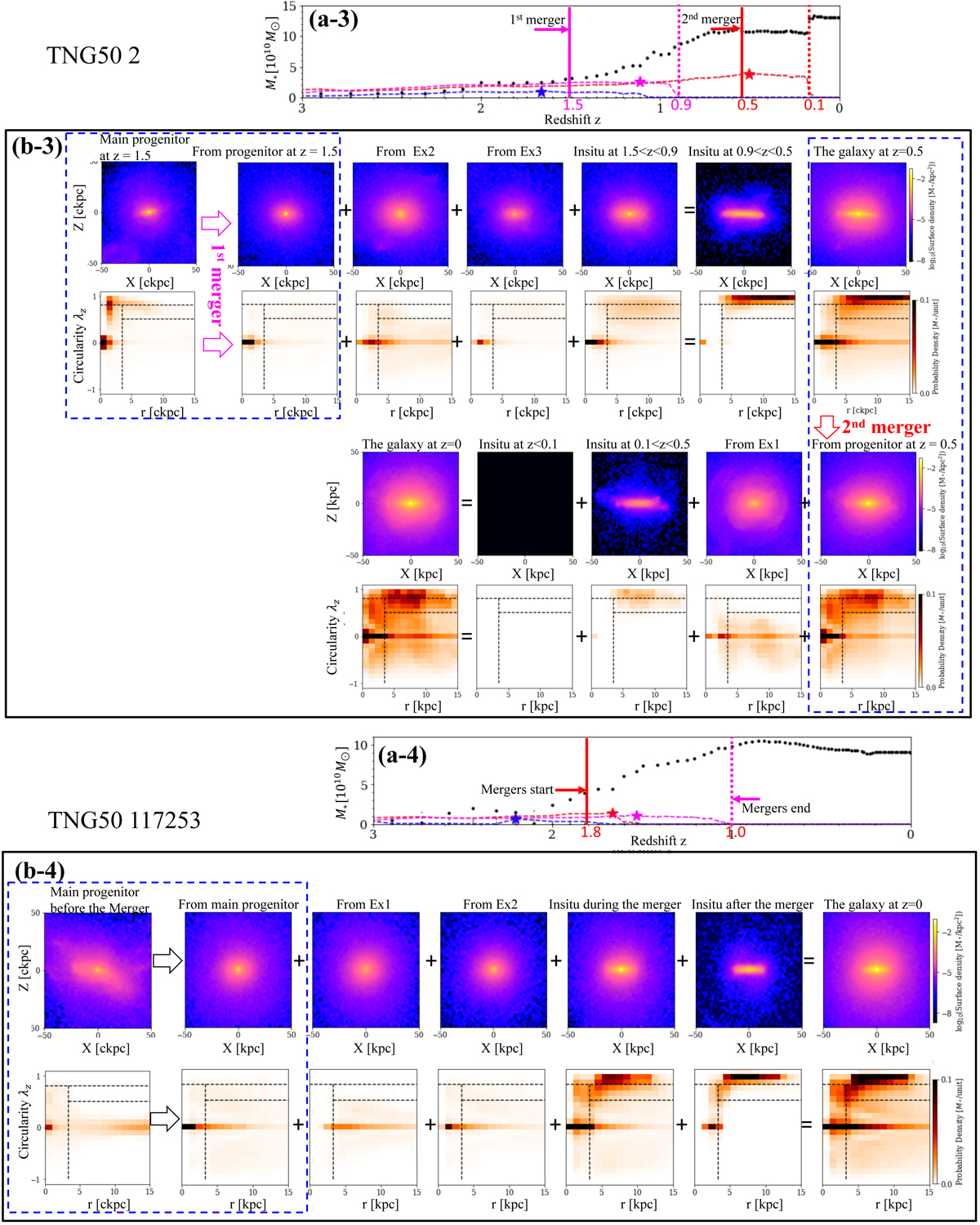Fig. 11.

Download original image
Formation of the hot inner stellar halo in the simulated galaxies TNG50 2 (a-3 and b-3) and TNG50 117253 (a-4 and b-4). The symbols are the same as in Fig. 10. Panel a-3: TNG50 2 has accreted three massive satellites, which are denoted by Ex1, Ex2, and Ex3, with decreasing stellar mass. Here, Ex3 and Ex2 were accreted simultaneously at z ∼ 1 and marked as the first merger, and Ex3 was accreted at z ∼ 0.1 and marked as the second merger. Panel b-3: we trace the structure formation during the two merger events. During the first merger, stars accreted from both Ex2 and Ex3, as well as stars formed during the merger, contribute to the hot inner stellar halo. After the first merger and before the second merger, a large number of stars were formed in a cold disk. The disk was then heated, becoming warm, during the second merger, and stars accreted from Ex1 contribute significantly to the hot inner stellar halo. Stars are rarely formed during and after the second merger as there is little gas left. TNG50 2 has a hot inner stellar halo mass of 4.3 × 1010 M⊙, of which 45% is a product of the most massive merger. Panel a-4: TNG50 117253 has accreted three massive satellites, which are still denoted by Ex1, Ex2, and Ex3, with decreasing stellar mass. We focus on the last two accretion events, Ex1 and Ex2, at 1 < z < 1.8. Panel b-4: structure formation during the accretion of Ex1 and Ex2. TNG50 117253 has a hot inner stellar halo mass of 1.5 × 1010 M⊙: the fraction produced by the most massive merger has an upper limit of 60%.
Current usage metrics show cumulative count of Article Views (full-text article views including HTML views, PDF and ePub downloads, according to the available data) and Abstracts Views on Vision4Press platform.
Data correspond to usage on the plateform after 2015. The current usage metrics is available 48-96 hours after online publication and is updated daily on week days.
Initial download of the metrics may take a while.


